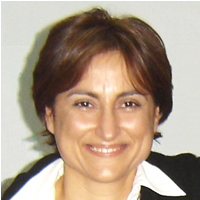Evaluation of the predictive value of CHA2DS2-VASc Score for no-reflow phenomenon in patients with ST-segment elevation myocardial infarction who underwent Primary Percutaneous Coronary Intervention
Published on: 28th October, 2019
OCLC Number/Unique Identifier: 8303626780
Objective: The aim of this study was to estimate the predictive clinical value of CHA2DS2-VASc score for no-reflow phenomena in patients having ST-segment elevation myocardial infarction (STEMI) who applied to primary percutaneous coronary intervention (PCI).
Subjects and Methods: Three-hundred STEMI patients underwent primary PCI. They were classified into: group (1) included 27 patients with no-reflow and group (2) included 273 patients without no-reflow (control). CHA2DS2-VASc risk score was computed for each patient.
Results: This study found statistically significant difference (p < 0.05) in multivariate analysis of the association between CHA2DS2-VASc score and no-reflow phenomenon. The predictive power of individual components in CHA2DS2-VASc score for no-reflow was statistically significant difference (p < 0.05). So, significantly higher CHA2DS2-VASc score is connected with higher risk of no-reflow and in-hospital mortality rate.
Conclusion: Significantly higher CHA2DS2-VASc score is associated with higher risk of no- reflow phenomenon and in-hospital mortality rates in patients with STEMI who underwent primary PCI.
Incidence and outcome of no flow after primary percutaneous coronary intervention in acute myocardial infarction
Published on: 31st August, 2020
OCLC Number/Unique Identifier: 8667871110
Background: Primary percutaneous coronary intervention (PCI) of the infarct-related artery (IRA) is the most effective treatment modality in ST-segment elevation myocardial infarction (STEMI). Incidence of no flow is 8.8% - 10% in primary PCI of STEMI patients. Our aim was to study actual incidence and outcome of no flow patients.
Methods: Five hundred and eighty primary PCI patients were enrolled and evaluated from 2016 January to 2017 December.
We used drug eluting stents in all cases. Majority of our patients (> 90%) presented to emergency six hours after onset of symptoms. There were many patients where there was no flow even after mechanical thrombus aspiration and pharmacological vasodilator therapy. We have studied primary outcome (mortality) of no flow in those patients.
Results: There were 44 cases of no flow in our series (7.75%). Involvement of Left anterior descending artery (LAD) was in eighteen patients. Right coronary artery (RCA) was culprit in twenty four cases. Only two cases were seen in LCX territory. One month mortality rate in no flow group was 50% and 6.25% in successful recanalization group. One year mortality was 12.5% in successful recanalization group and 66% in no flow group.
Conclusion: Refractory no flow during STEMI intervention is associated with increased incidence of major adverse cardiovascular events (MACE).
There is no established strategy to solve this phenomenon.
RV Function by cardiac magnetic resonance and its relationship to RV longitudinal strain and neutrophil/lymphocyte ratio in patients with acute inferior ST-segment elevation myocardial infarction undergoing primary percutaneous intervention
Published on: 23rd November, 2021
OCLC Number/Unique Identifier: 9359437609
Background: Although acute inferior myocardial infarction (MI) is usually regarded as being lower risk compared with acute anterior MI, right ventricular (RV) myocardial involvement (RVMI) may show an increased risk of cardiovascular (CV) morbidity and mortality in patients with inferior MI. CMR is ideal for assessing the RV because it allows comprehensive evaluation of cardiovascular morphology and physiology without most limitations that hinder alternative imaging modalities. Objectives: To evaluate the sensitivity of strain and strain rate of the RV using 2D speckle tracking echo and the neutrophil/ lymphocyte ratio (NLR) compared to cardiac MRI (CMR) as the gold standard among patients with inferior STEMI undergoing primary percutaneous coronary intervention (PCI). Methodology: 40 Patients with inferior MI who had primary PCI were included in the study; they were divided into two groups according to the RVEF using CMR. NLR was done in comparison to RVEF.Results: out of the 40 patients, 18 (45%) patients had RV dysfunction. 2D echocardiography was done for all patients, where fractional area change (FAC) in the RV dysfunction group appeared to be significantly reduced compared to the group without RV dysfunction (p value = 0.03). In addition, RV longitudinal strain (LS) by speckle tracking echo was reduced with an average of 19.5 ± 3.9% in the RV dysfunction group.Both CMR- derived RV SV, and EF were lower among the RV dysfunction group, (26.8 ± 15.8) ml and (35.4 ± 6.9)% respectively, with large RV systolic volume, with a highly statistically significant difference in comparison to the other group (p value = 0.000). Complications, heart block was significantly higher in patients with RV dysfunction (p value = 0.008) as it occurred in 5 (27.8%) patients.N/L ratio for predicting RV dysfunction by CMR had a cut-off value of > 7.7 with low sensitivity (38.8%) and high specificity (77.3 %). In contrast, LS for predicting RV dysfunction by CMR had high sensitivity (83.3%) and high specificity (63.6%) with p value = 0.005.Conclusion: Our results showed that RV dysfunction in inferior MI is better detected using cardiac magnetic resonance imaging. In inferior STEMI patients who underwent primary PCI, NLR has low sensitivity but high specificity for predicting RVD when measured by cardiac MRI.
















